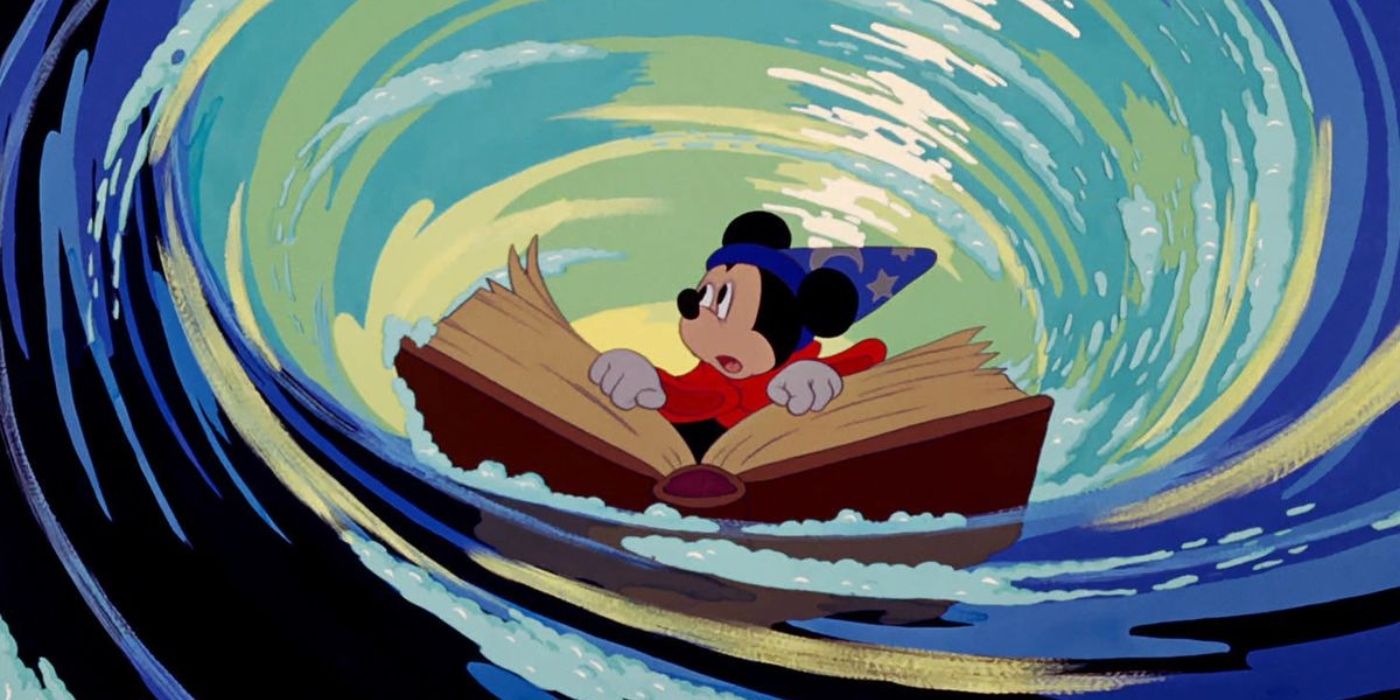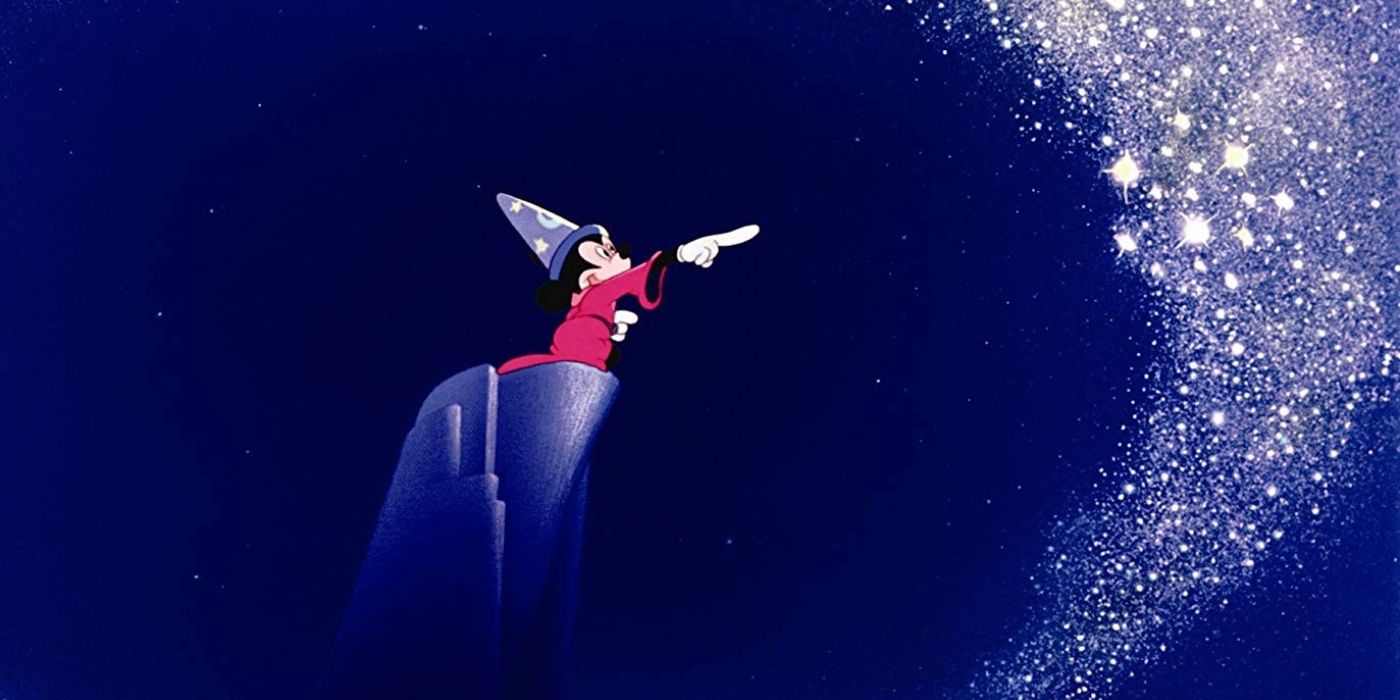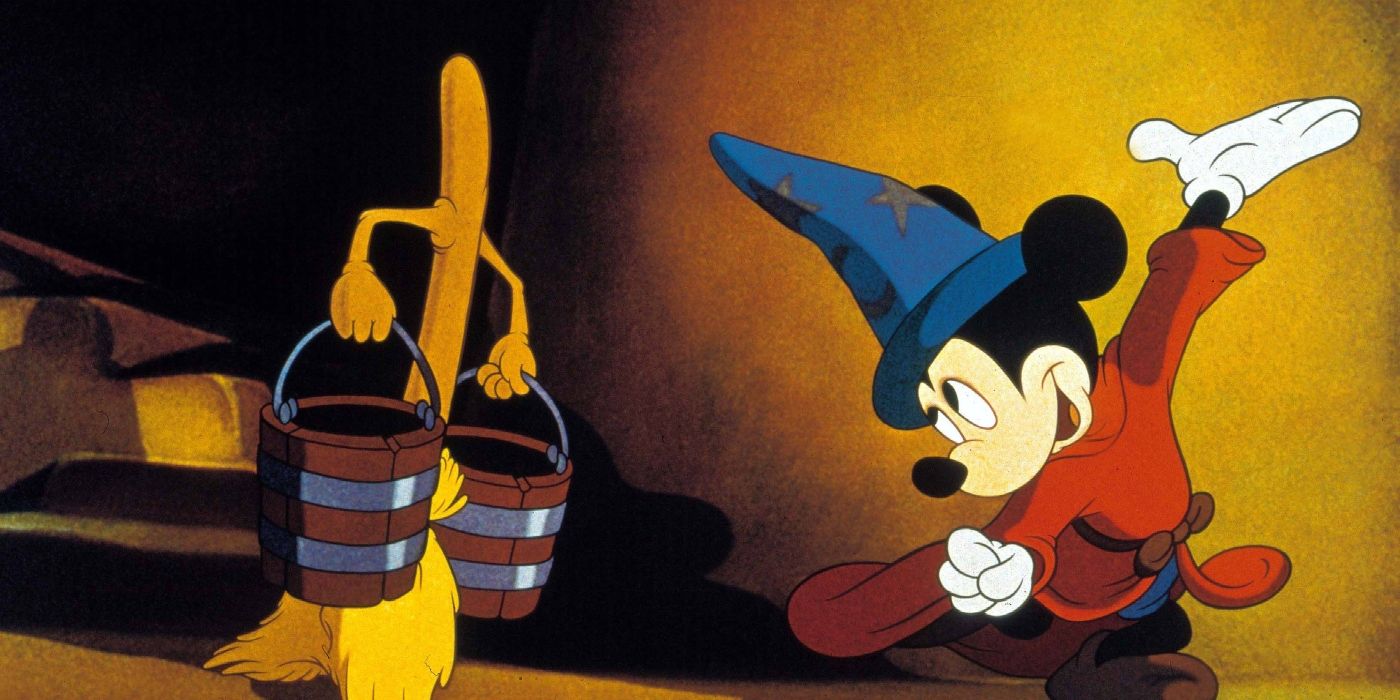In 1936, Walt Disney believed that his studio's iconic Mickey Mouse was losing his popularity and decided to construct an elaborate new short centered around the character. This became "The Sorcerer's Apprentice," eventually regarded as one of the studio's most iconic segments. But at the time of production, the sheer cost of the short set in motion a feature-length film, which despite becoming a vital piece of the studio's history actually came close to bringing it all down. This is how Fantasia became a critical darling while also almost dooming Walt Disney Studios.
Within the world of animation, Fantasia remains something of a benchmark for Walt Disney Animation. The third feature-length Disney film following the massive success of Snow White and the Seven Dwarfs and the lackluster returns for Pinocchio, Fantasia is an animated anthology that features stunning animation paired with classical music. An ambitious showcase for the studio that evolved as a means to do a wider release for "The Sorcerer's Apprentice," it was a personal favorite of Walt Disney himself -- who had intended for follow-ups to the film to become a regular release from the studio, incorporating new shorts as the years went on. But the film almost instantly hit roadblocks upon release in 1940.
The audio technical aspects ended up ballooning, taking up roughly a fifth of the film's total budget. RKO Radio Pictures didn't want to distribute a lengthy musical, forcing it to embrace a roadshow approach to release. Although audiences were entranced, the sheer cost of the operation forced the Walt Disney Studio further into debt. World War II erupting in Europe resulted in numerous overseas markets being cut off from the film industry, keeping Fantasia from finding a more expansive audience. The war-effort stateside also resulted in the Fantasia tour being cut short. It would later be restarted during the war, but it was clear from the onset that despite the ambitions behind Fantasia, it was a bigger financial failure than even Pinocchio (which, like Fantasia, would eventually gain a legacy that stretches into the modern-day).
This all came at a tumultuous time at Walt Disney Studios, as recounted by The Wrap. Following the unprecedented success of Snow White, the Disney company had heavily invested in its animation staff, expanding the workforce and output by a large scale. But personal politics within the Disney Company increasingly turned Disney and other higher-ups against animators like Art Babbitt, who were campaigning for the studio's workers to unionize. The tension behind-the-scenes -- only made worse by the financial straits the company found itself in following Fantasia's release -- erupted into an animator strike after Babbit was fired in May of 1941. Walt Disney accused the strikers of being communists based on the opinions of his lawyers, as broken down in the (pretty great) documentary "Walt's Field Day" from Defunctland on YouTube.
The strike came during the production of Dumbo and Bambi, whose success would determine if the studio survived -- with the strike making it difficult for the films to be produced. After weeks, the strike was settled, although not by Walt Disney himself. Disheartened by the experience and the break between him and the animators, Disney took part in a goodwill tour to South America (that would go on to inspire Saludos Amigos and The Three Caballeros). When he returned, Walt Disney Animation had survived by the skin of its teeth thanks to Dumbo and Bambi. But the studio would remain in financial straits for years until the major success of Cinderella, and Disney himself eventually shifted more attention toward the construction of what would become Disney Land and Disney World.
Decades later, Fantasia's legacy is far more assured. It's often considered a highlight of the early Disney era, a landmark piece of commercial animation also being considered art. It found resurgences in later releases with even some (controversial) sequels and now stands as a benchmark for the company. But the chaos surrounding its initial release -- coupled with problems that had already been bubbling under the surface at the studio -- almost doomed the entire company before audiences could truly get the chance to appreciate the finished product for all its glory.



